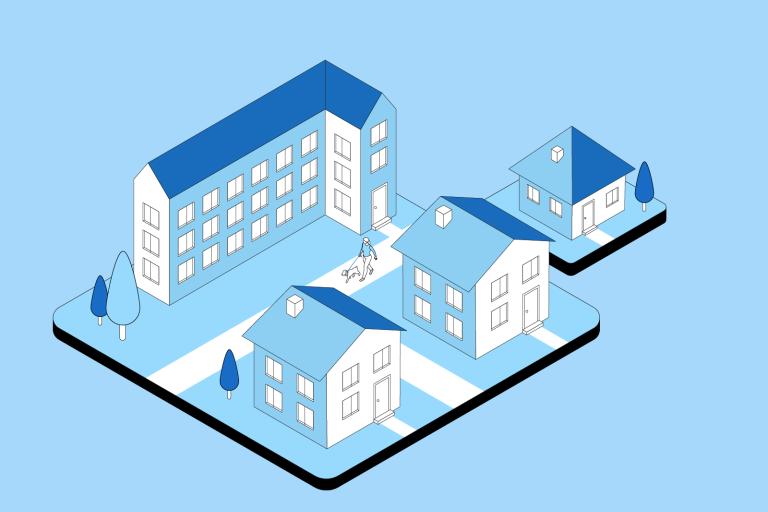Footways and cycle tracks
Guidance on accommodating footways and cycle tracks, and how to design them.
Bridges
Bridges can overcome major barriers on desire lines.
Coloured surfacing
Coloured surfacing can help pedestrians, cyclists and drivers to identify cycle lanes and tracks.
Cycle tracks and cycle lanes
Protected cycle tracks offer segregated space to create inclusive cycling conditions. Cycle lanes are spaces reserved for cycling on the carriageway.
Pavements and footpaths
Pavements should provide a safe, comfortable and accessible space for people walking and wheeling.
Surface materials
Choosing appropriate surface materials will ensure that a development will be functionable, attractive and will last over time.
Tactile paving
Tactile paving enables blind and vision impaired people to navigate safely around the public realm.
Underpasses
Underpasses, where they are necessary, can overcome barriers formed by large busy highways and railways.
Junctions, crossings and access
Guidance on providing for walking, wheeling, and cycling movements across side streets, from one side of the street, at the junctions of streets or to access buildings.
Crossings
Safe and accessible crossings provide direct and convenient connections between local cycling and walking networks.
Junctions
The design of junctions requires careful consideration because they are places of frequent interaction and potential conflict between people walking, wheeling and cycling.
Roundabouts
Meeting the needs of people walking, wheeling and cycling near roundabouts.
Safety, amenities and placemaking
Guidance on features and amenities that ensure active places are safe, well-used, functional, and attractive.
Benches and resting points
Benches and resting points along walking, wheeling and cycling routes should offer diverse seating options to accommodate various needs.
Green and blue infrastructure
Meeting the needs of people walking, wheeling and cycling near roundabouts.
Guardrails
Poorly located guardrails can increase the risk and severity of collisions. They can also limit the ability of pedestrians to cross on the desire line.
Lighting
Lighting plays a crucial role in helping people find their way and provides a sense of security.
Natural surveillance
Buildings and local activity can provide natural surveillance for walking, wheeling and cycling routes.
Shelter points
Shelter points invite communities to dwell, socialise and enjoy their surroundings.
Signage and wayfinding
Routes for pedestrians and cyclists should be well signed and easy to follow.
Streets
Guidance on street design and how walking, wheeling, and cycling can be accommodated alongside public transport and motorised traffic.
Designing for lower traffic speeds
Designing streets and zones with a maximum speed limit of 20mph can enhance safety for pedestrians, wheelchair users and cyclists.
Bus stops
Bus stops should be placed at regular intervals to promote the use of public transport and multi modal journeys.
Maintenance
Maintaining and managing routes is important to minimise hazards and obstructions.
Monitoring
Monitoring devices, such as sensors and communications boards, enhance understanding of the local transport network.
Tram tracks
Areas with tram systems must consider the challenges posed by tram tracks and take measures to mitigate risks and improve safety for cyclists, pedestrians and other road users.
Guidance on how to plan and design active places at a site-wide level



